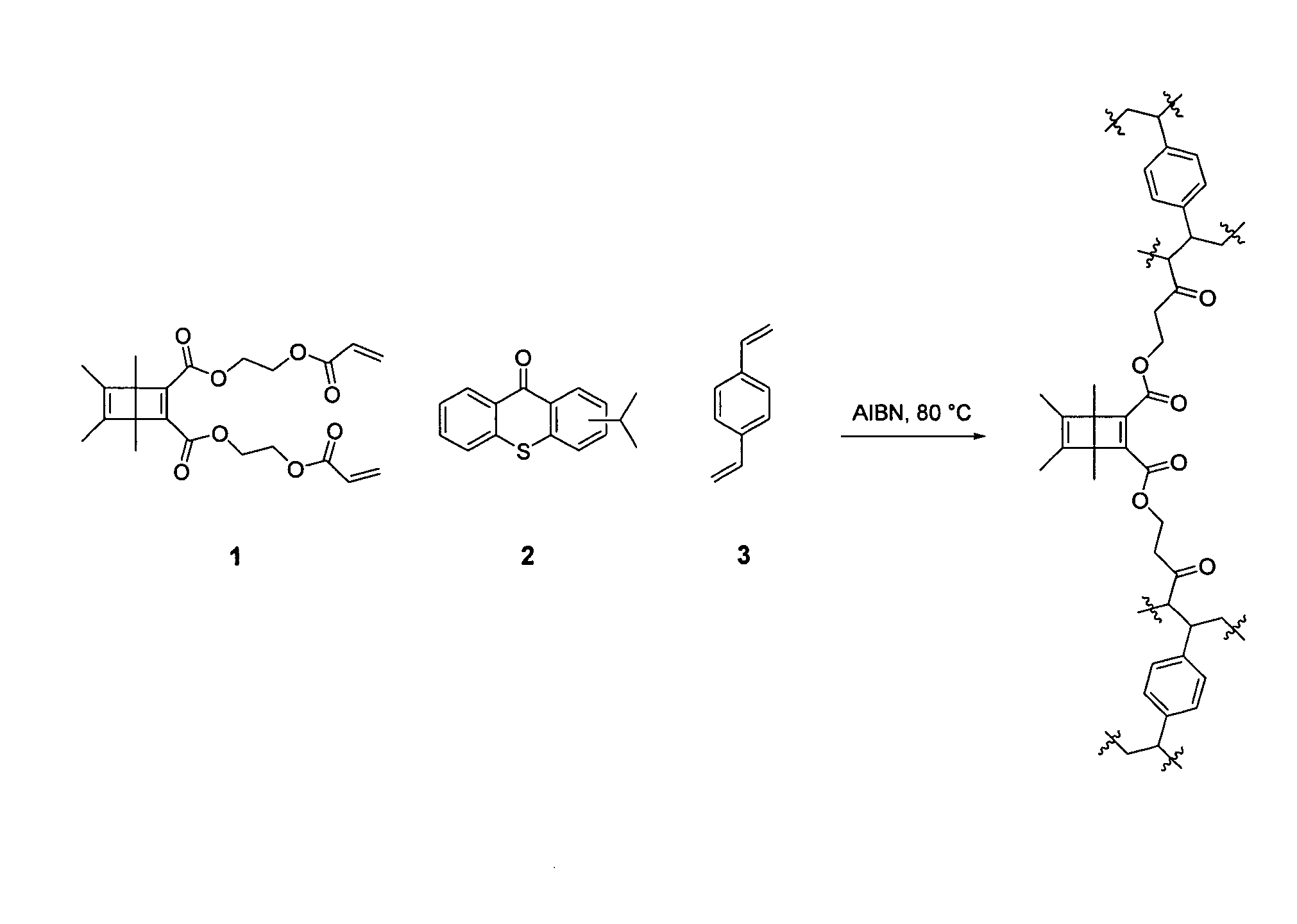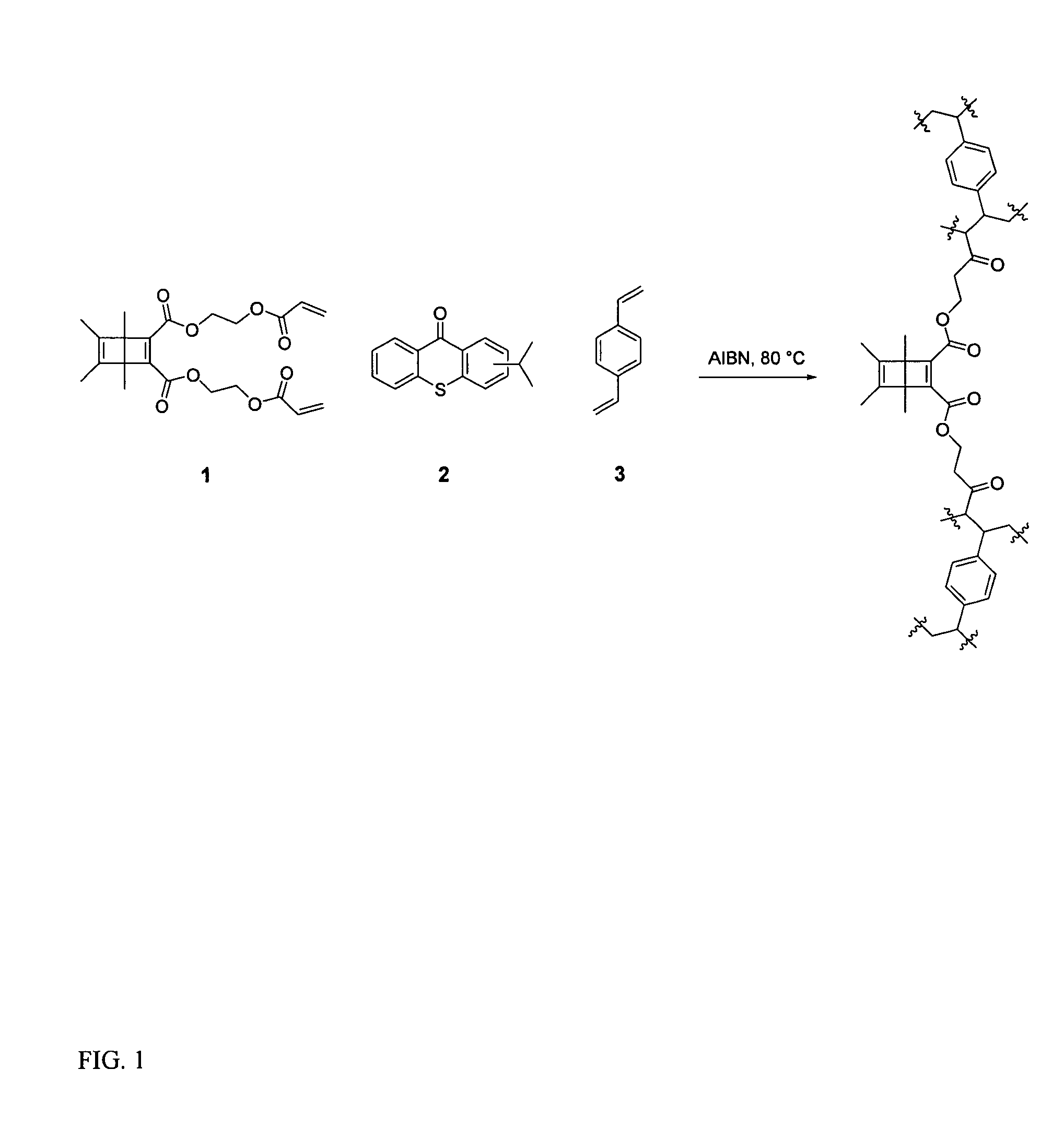High performance, crosslinked polymeric material for holographic data storage
a polymer material and data storage technology, applied in the field of compositions and methods for producing holographic optical recording materials, can solve the problems of limiting the performance and commercial viability of photopolymers, and two-dimensional storage techniques that are rapidly reaching their fundamental physical limits, etc., to achieve high photosensitivity, high diffraction efficiency, and high dynamic range
- Summary
- Abstract
- Description
- Claims
- Application Information
AI Technical Summary
Benefits of technology
Problems solved by technology
Method used
Image
Examples
example
[0031]Formulation. Formulations were prepared by mixing 200 mg dewarbenzene monomer 1, 3.5 mg AIBN, 50 mg divinylbenzene, and 3.5 mg Isopropyl-9H-thioxanthen-9-one. The mixture was placed in an oil bath (90° C.) for few seconds till a clear solution was obtained. Note: Special care should be taken to avoid any moisture and light.
[0032]Sample Preparation. To fabricate optical films, several drops of the clear formulation were placed in between two 3×1 inch glass plates separated by Teflon spacers of the desired thicknesses (0.5-1.5 mm). Plastic clips were placed on both ends of the glass slides to hold them in proper position. The whole assembly was then placed in a heating oven set at 95° C. Curing time of 25 minutes was required for obtaining good optical quality films of 0.5 mm thickness. After curing the films, the sample sandwiched between two glass slides was mounted on the holographic setup and exposed.
[0033]Properties of the Holographic System:
PUM
| Property | Measurement | Unit |
|---|---|---|
| thick | aaaaa | aaaaa |
| exposure time | aaaaa | aaaaa |
| thicknesses | aaaaa | aaaaa |
Abstract
Description
Claims
Application Information
 Login to View More
Login to View More - R&D
- Intellectual Property
- Life Sciences
- Materials
- Tech Scout
- Unparalleled Data Quality
- Higher Quality Content
- 60% Fewer Hallucinations
Browse by: Latest US Patents, China's latest patents, Technical Efficacy Thesaurus, Application Domain, Technology Topic, Popular Technical Reports.
© 2025 PatSnap. All rights reserved.Legal|Privacy policy|Modern Slavery Act Transparency Statement|Sitemap|About US| Contact US: help@patsnap.com



